
Photo Essays
9 MIN READ

A visual glimpse into how infrastructure development and trade are changing the area’s geopolitical and geoeconomic significance.

Rasuwa district has historically been a strategic Himalayan frontier and is home to one of the two major border crossings between Nepal and the Tibet Autonomous Region, China.This route was a central locus [footnote] Sam Cowan, 2013, “All Change at Rasuwa Garhi” HIMALAYA 33(1): 97-102 [/footnote] for military campaigns on multiple occasions, and a key passage for centuries for trans-Himalayan traders, pilgrims, artisans, and religious teachers. When China built the Araniko highway through Kodari in the 1960s, Rasuwa was overshadowed, as the volume of trade and other mobilities concentrated on the Kodari border crossing in Sindhupalchowk. However, Rasuwa’s so-called backwater status has undergone a dramatic reversal since the 2015 Nepal earthquake, when China shut down the Kodari border crossing and evacuated its citizens from Zhangmu, across the Bhote Kosi from Kodari, to the nearby town of Shigatse. Although activities in the Kodari region have slowly resumed and the border was triumphantly reopened at the end of May 2019, movement across this border has been negligible since. In large part, this appears to be because of China’s priority of the Rasuwa border over Kodari, a position that has been historically consistent [footnote] Sam Cowan, 2013, “All Change at Rasuwa Garhi” HIMALAYA 33(1): 97-102 [/footnote]. The Rasuwa border can be considered a “key locus and first point of entry for China in South Asia.” [footnote] Murton, Galen, Austin Lord & Robert Beazley. 2016. A Handshake Across the Himalayas:” Chinese Investment, Hydropower Development, and State Formation in Nepal. Eurasian Geography and Economics 57(3): 403-432. [/footnote]
Rasuwa has thus seen significant infrastructural development, trade, and other cross-border traffic of people and commodities in recent years. Talks of ambitious geopolitical and geo-economic projects abound, especially in the wake of Chinese President Xi Jingping’s visit to Nepal in October 2019, including a trans-Himalayan railway as a part of China’s Belt and Road Initiative. Despite these recent highlights, it is worth noting that the construction of the first roads in the region were connected to the development of hydroelectric projects. In particular, the construction of the Trishuli hydropower station in 1967 by the governments of Nepal and India connected the district headquarters, Dhunche, to Kathmandu, and the construction of the Chilime hydropower facility further extended the road network to parts of northern Rasuwa. Contrary to arguments that emphasize the geopolitics of roads, we suggest that roads, in particular in Rasuwa, were primarily built—and continue to—facilitate local resource and labor extraction, hydropower construction (e.g., Trishuli and Chilime), and mining (e.g., Somdang zinc mine).
This photo essay offers a visual glimpse into how infrastructure development in Himalayan borderlands transform these regions otherwise seen as peripheral into major geopolitical and geoeconomic hotspots. Photos show the dramatic makeover of the infrastructure of transport and the bureaucracy, including a major dry port and customs office in Rasuwagadhi; the mushrooming of secondary markets, including local eateries and banking institutions; new geographies of labor and old dynamics of trades; emerging transportation enterprises; and the construction of the new Mailung-Syabrubesi road.
We are particularly struck by the ways in which locals of Rasuwa are marginalized within these emerging assemblages of infrastructures, trade, labor, and transportation. For instance, the construction of the dry port at Timure attracts a large number of local workers from surrounding villages like Timure and Thuman but for an extremely low wage, potentially dislocating them from their livelihood and place. Traders who operated on the Kodari border before the earthquake have moved posts, and now dominate major trades in Rasuwa, marginalizing Rasuwa traders within the burgeoning border trade. At the same time, big actors like Silk Transport have entered the scene. Our observations, and conversations with many interlocutors in Rasuwa suggest that Silk Transport, a transportation company which currently owns 38 trucks, is set to increase the number of trucks to 200 within the next few years and dominate transport enterprise in this major border crossing between China and Nepal.
Although better off families have been able to make do by opening small scale lodges, shops, or investing in transportation enterprises, a large majority of Rasuwa locals grapple with the unevenness of infrastructure development and the associated effects. Such emerging social and economic dynamics in the region associated with the road contrast with the celebratory narratives of infrastructure development that dominate national media and geopolitical discourse about the region.
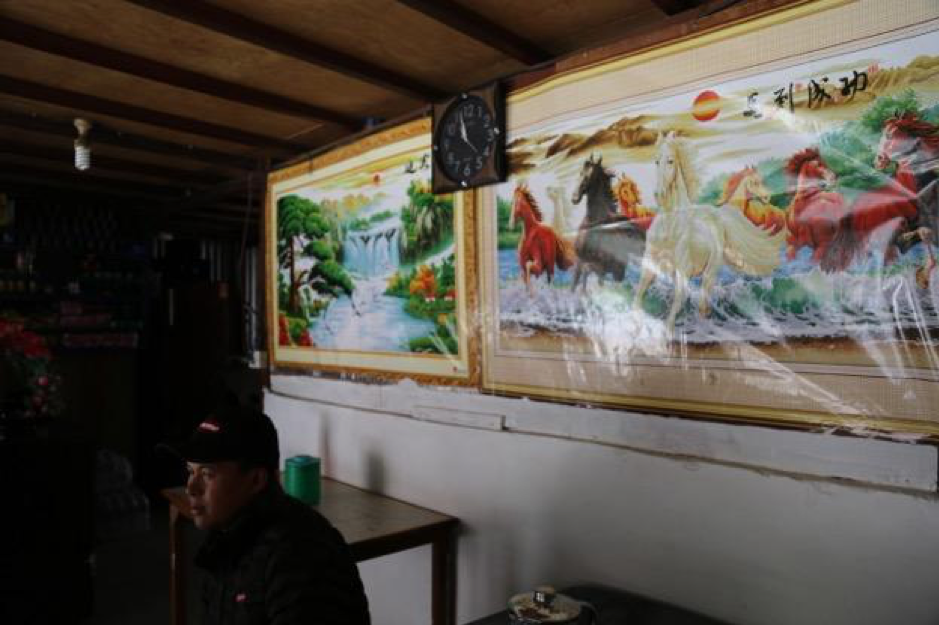
Ghattekhola village is approximately a kilometre-and-a-half south of the Rasuwagadhi border. Formerly a small village with only about a dozen households, it is quickly growing into a vibrant site for trade and other activities along the Rasuwagadhi corridor. Apart from local eateries and hotels catering to the truckers and locals crossing the border, it also houses a temporary immigration office, a border police station, and several motor workshops.
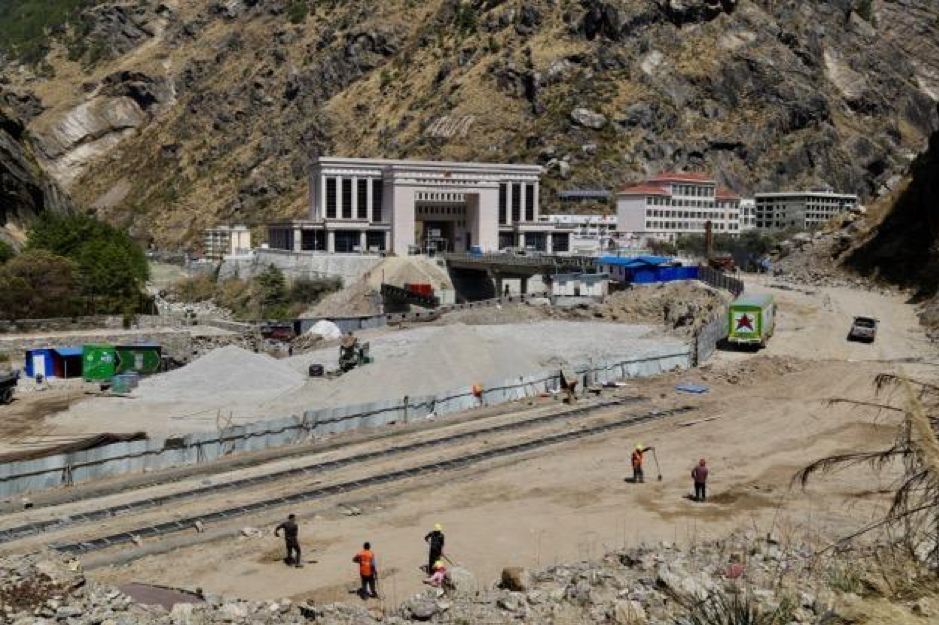
Nepal and China signed an agreement in April 2015 to construct an integrated border facility at the Rasuwagadhi border in Nepal, with the objective of boosting overland trade between the two neighbors, as well as to ease the cross-border mobility of its citizens. According to the agreement, China agreed to provide consultation and financial aid to build a dry port at Rasuwagadhi, near the friendship bridge. The construction of the planned dry port and border facilities began in 2019, nearly four years after the agreement was signed.
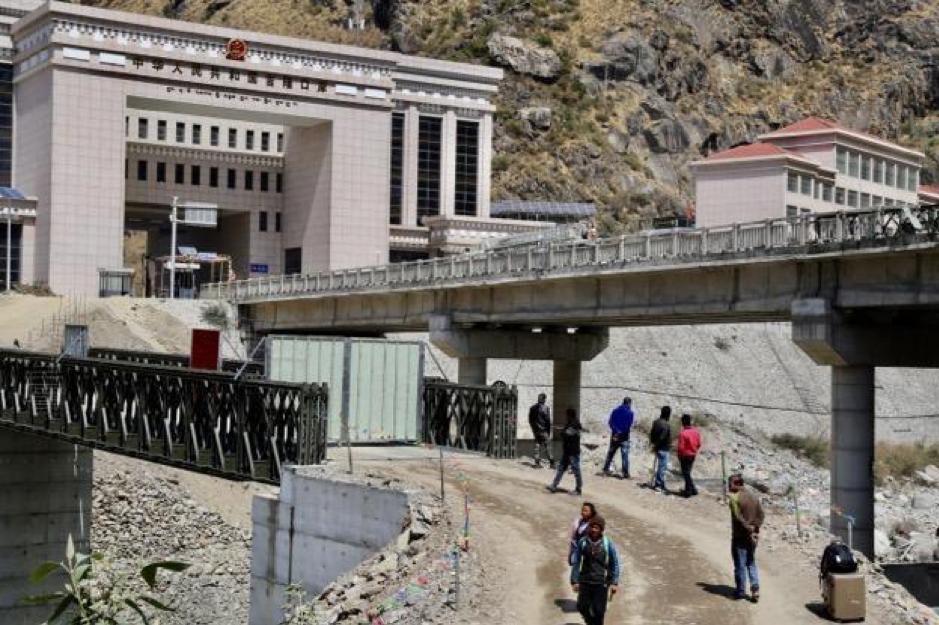
The 2015 Nepal earthquake severely damaged the friendship bridge at Rasuwagadhi. A landslide triggered by the earthquake further damaged the bridge. Vehicles currently use a military-style portable prefabricated truss bridge installed below the ravaged old bridge, which is under construction.

After the closure of the Tatopani-Kodari border corridor in the aftermath of the earthquake, Rasuwa became Nepal’s only cross-border corridor with China. Despite poor road infrastructure made worse by recurrent landslides, and Nepal’s import-driven trade, the customs office at Timure has been relatively successful, in terms of meeting revenue collection targets set by the Department of Customs over the years. In March 2019, the chief customs officer informed us during a visit to the region that the Timure customs office had yet again met a set target of NRs 9 billion [approximately USD 79.44 million] in revenue in eight months. According to a media report, “the highest revenue, Nepali Rupees 2.32 billion [approximately USD 20.48 million], was recorded in September-October, when imports soared due to demand fueled by Dashain and Tihar festivals”. The large revenues generated in Rasuwa go straight to the national treasury.
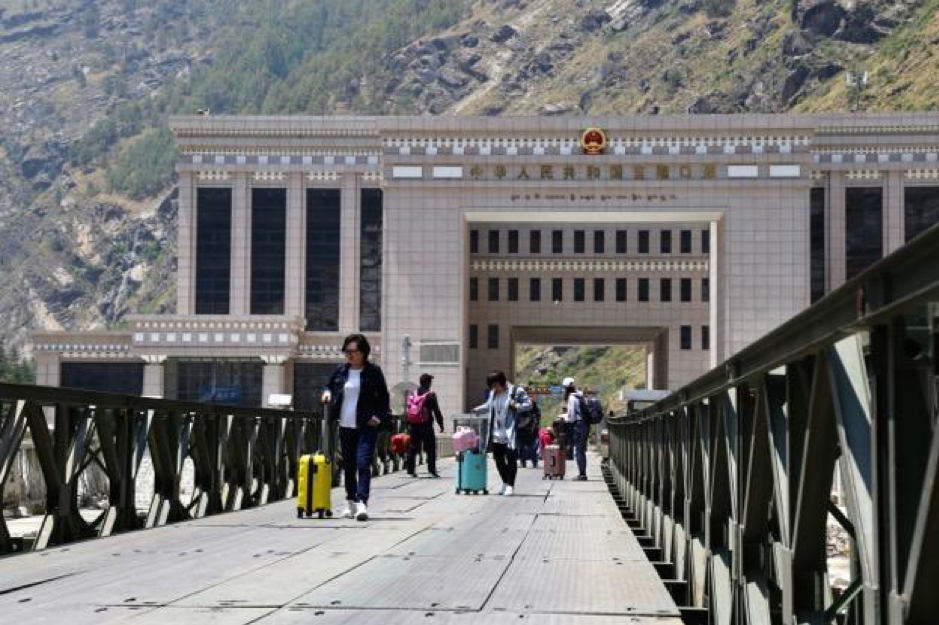
According to Nepal’s Department of Immigration, Chinese nationals registered as the highest percentage of tourists in the first four months of 2019 at nearly 65,000, a 20 per cent increase from the previous year. According to the same report, more than 25,000 Chinese tourists entered Nepal through Rasuwagadhi alone. Local hotel owners say these tourists only pass through Rasuwa and hardly spend time or money in the district.

A large number of local residents currently work in Timure truck park transporting imported goods after they clear customs. They are mostly from Timure, but also include locals from neighboring villages such as Thuman, Khangjim, Bhirdim, Chilime, Gatlang, and others. There are also people from outside Rasuwa district who work as porters in Timure. According to one of our interlocutors, Timure truck park employs the greatest number of locals from the region. Locals from neighboring villages often rent a small room in Timure during the peak season, when the work is more profitable. The majority of the people working in the park are women, and the inhospitable area is their toddler children’s playground.
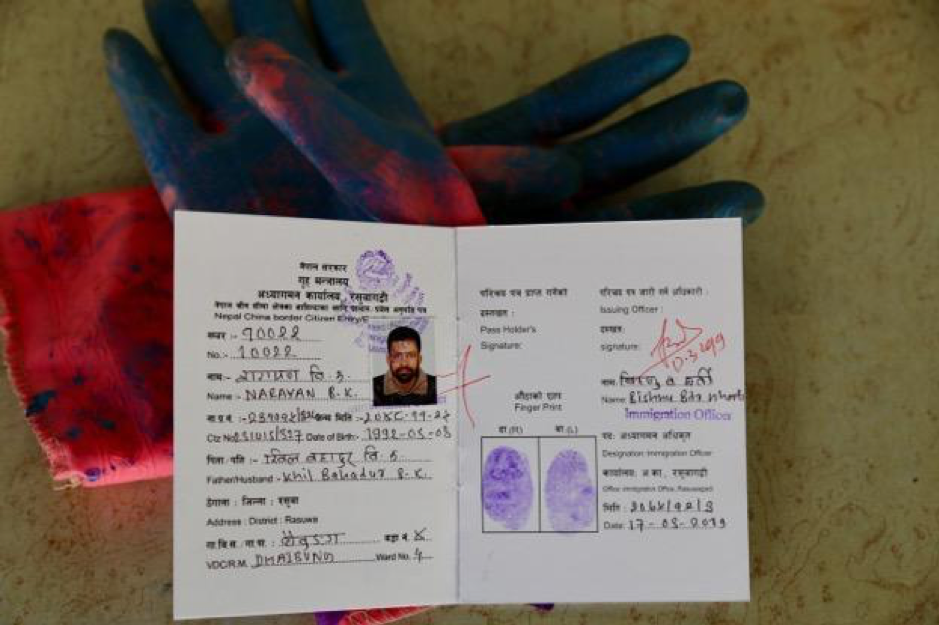
With the development of road infrastructure and the formalization of trade between Nepal and China, Rasuwa residents have more interactions with state agents and the bureaucracy. Historically, residents did not require paperwork to cross the border. However, since the signing of the Sino-Nepal boundary agreement in 1960, citizens from border areas have to apply for Nepal-China border entry/ exit passes. Only residents of Rasuwa district are eligible for this pass to cross the Rasuwa-Kerung border.

Nepal has seen a rapid decline in agricultural work due to outmigration to urban areas, as well as to the Gulf states and Malaysia for manual labor. Rasuwa’s villages have experienced this too, at the expense of subsistence agriculture, despite a local refrain that in the village of Thuman, “suun ra nuun bhayek sabai kura falcha”: everything except salt and gold grows in Thuman. The re-opening of the border and subsequent increase in trade has not changed the farming situation, although many residents now work within the district.
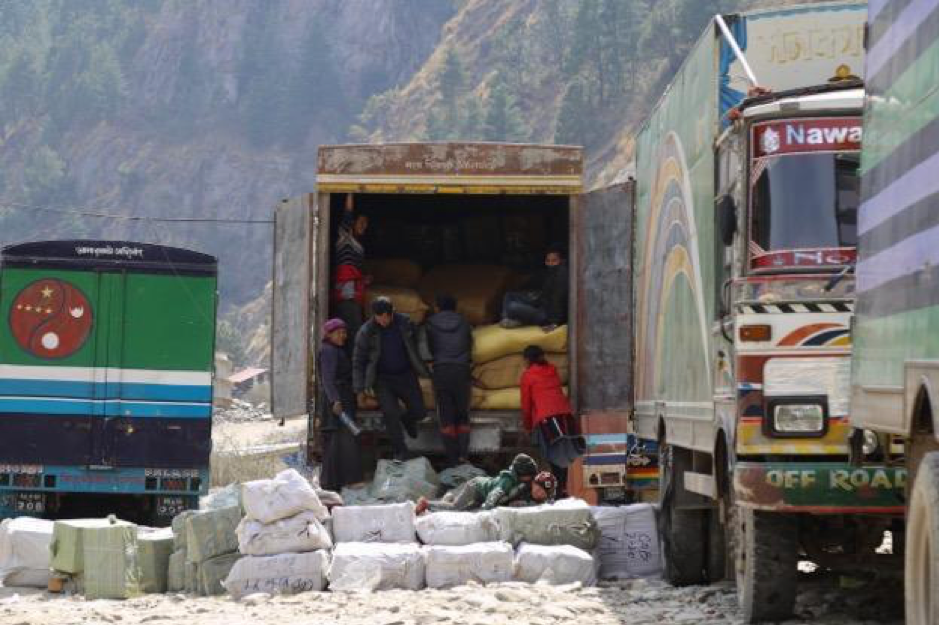
In Timure, hundreds of porters work in the parking area to unload imported goods from China that make it through customs and load them onto Nepali trucks at the border. Depending on the season, a group of five or six porters earn NRs 5000-8000 per day (USD 44-70). Residents say that porters working in the parking lot can earn between NRs 50,000-60,000 (USD445-530) during peak season.
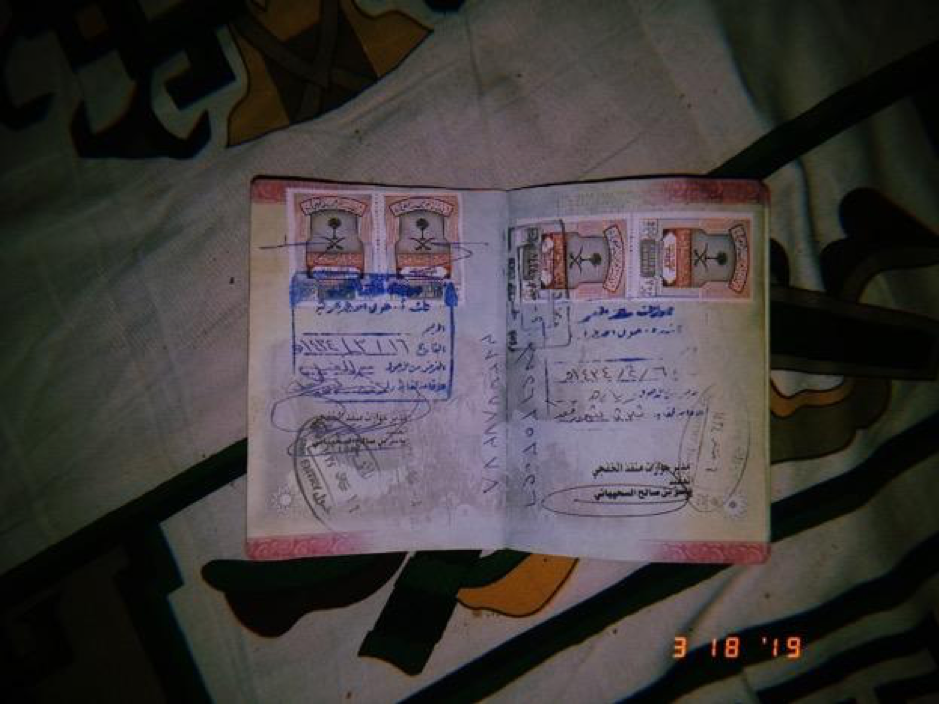
A significant number of people from Rasuwa work in Gulf states; Kuwait in particular is a preferred destination for women. Now, returnee labor migrants often work as porters at the Timure truck park.
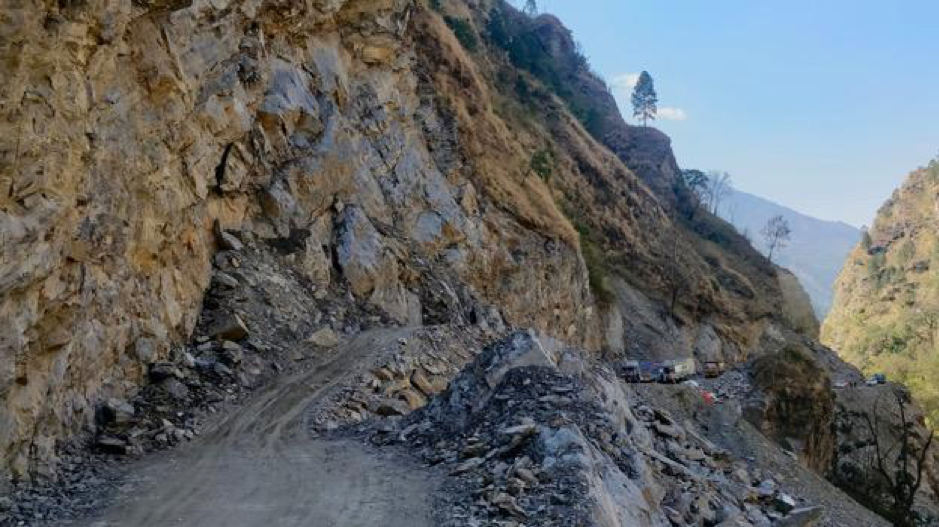
To deal with the geologically challenging terrain and its perennial disruption due to landslides during monsoon, the Nepal Army was contracted to open the Mailung-Syabrubesi road, which is meant to shorten the distance from Kathmandu to Rasuwagadhi by 24km. However, since the official opening of the new road in May 2018, and despite much national publicity, the Mailung-Syabrubesi stretch has remained closed to both freight trucks and passenger jeeps for the most part of the year.
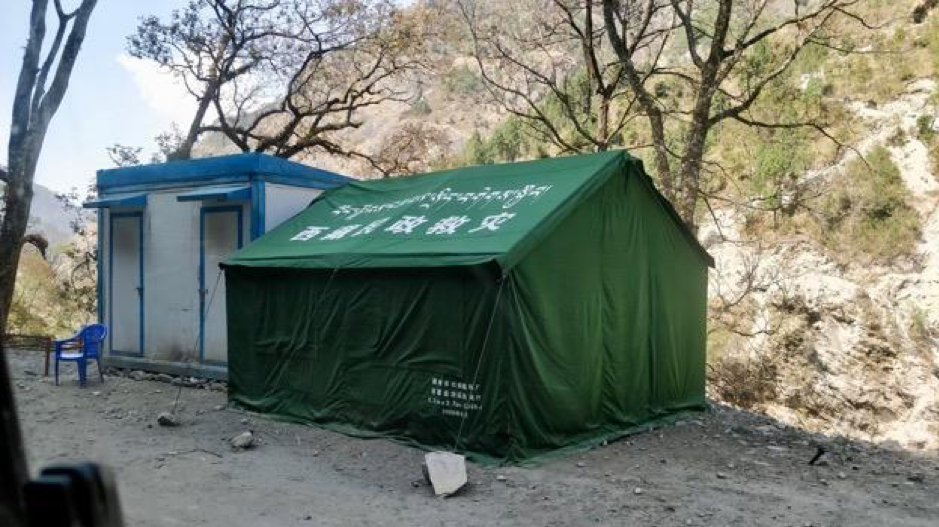
A journey to Rasuwagadhi includes encounters with at least a half-dozen security check posts staffed variously by the Nepal Police, Armed Police Force, and the Nepal Army. The army check posts, also located in national parks throughout Nepal, are known to be particularly strict as they search for contraband wildlife products in and around Langtang National Park. Delays in setting up such checkpoints along the Mailung-Sybrubesi road is cited as one reason for what officials call the “incomplete opening” of the road.
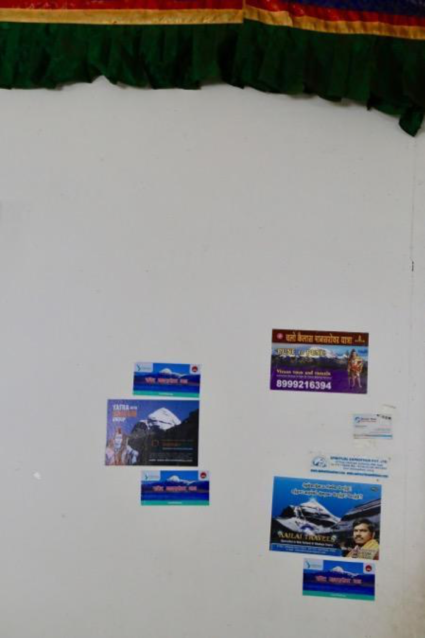
The increasing numbers of Mount Kailash yatri, or pilgrims, particularly from India, using this transit point is profitable for the hotels along the road. Often, Indian yatri to Kailash have to wait a day or two in Rasuwa to get their visas before entering China’s Tibet Autonomous Region.
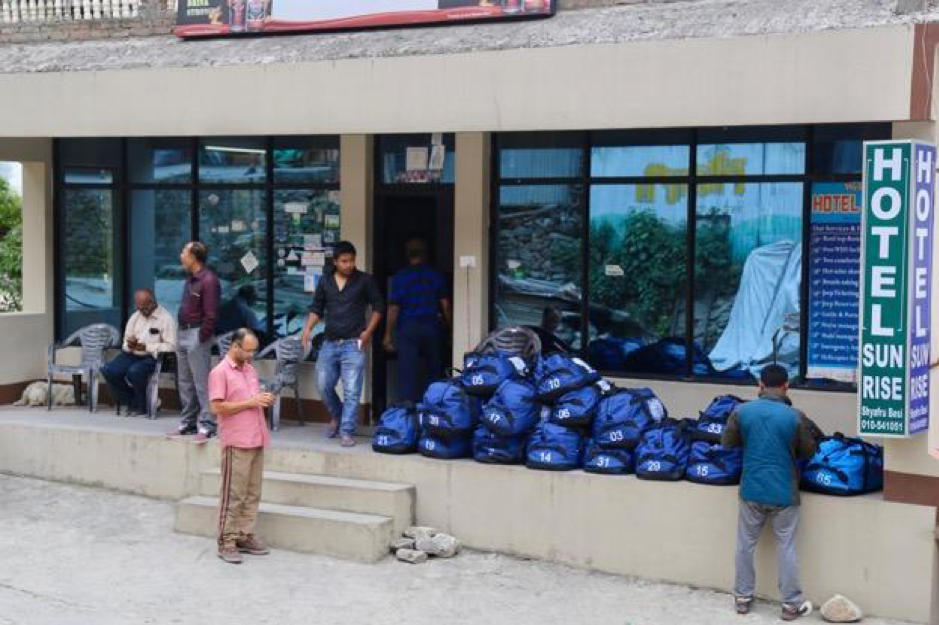
Since 2018, Indian pilgrims headed to Mount Kailash have increasingly chosen the Rasuwagadhi-Kerung route in Rasuwa, as opposed to the Hilsa route in Humla district in western Nepal. When we visited Rasuwa in spring 2018, the majority of hotels between Ghattekhola and Dhunche were hosting Indian pilgrims. The change is visible even in menus: where hoteliers used to serve Nepali and Western food to trekkers and tourists, they now offer Indian dishes.
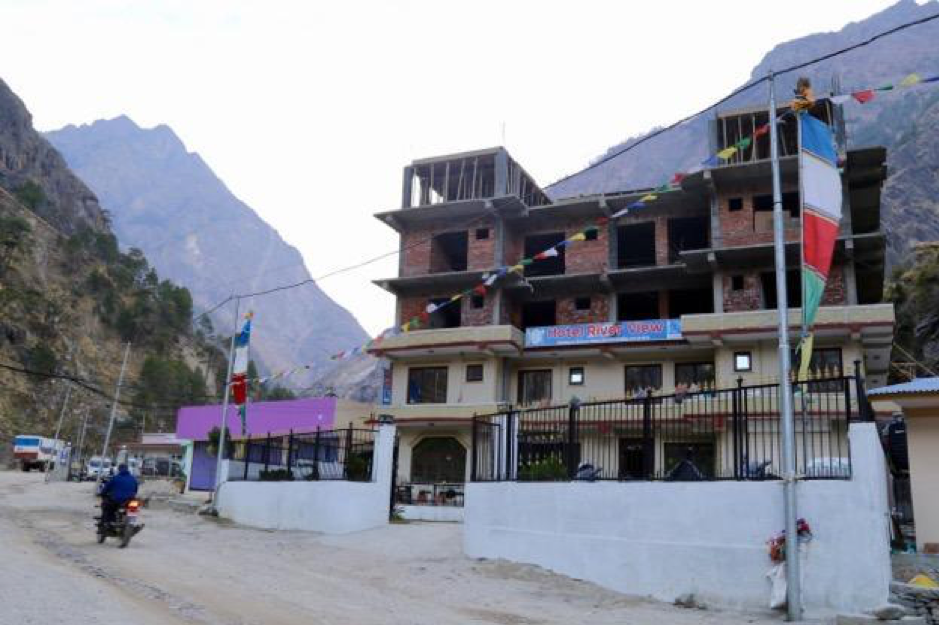
In Rasuwa, especially in Timure and Ghattekhola, hotels are mushrooming, and older ones are being upgraded to accommodate more visitors travelling the route.
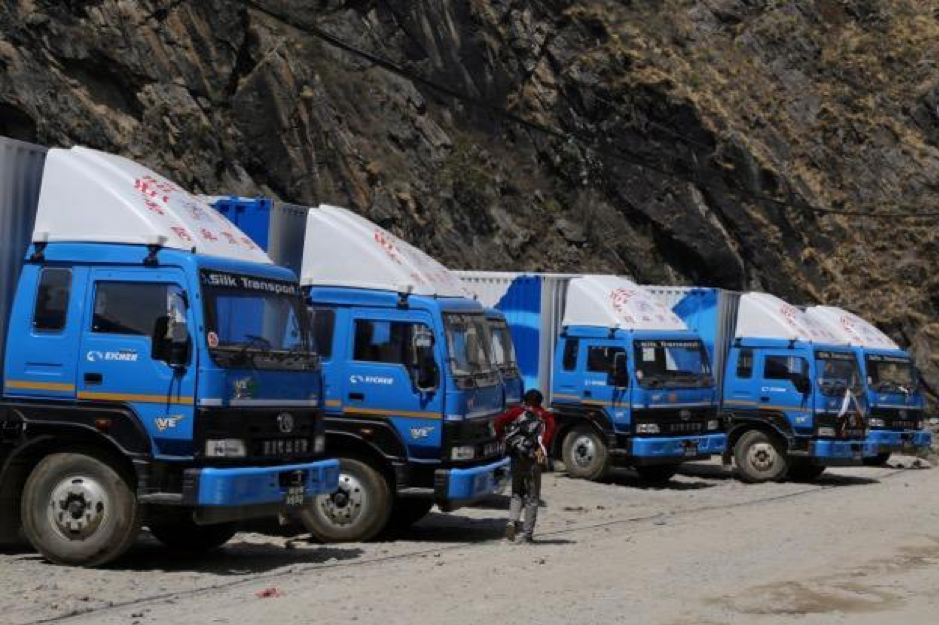
During our second visit to the region in 2019, we saw a newly formed transportation company, Silk Transport, which had brought in 38 trucks under their banner. Silk Transport offers transportation to Kathmandu at 20 per cent lower rates than what other companies had been charing from Kerung. Timure residents told us they understood that Silk Transport plans to increase their fleet to 200 in the coming year and so is likely to dominate the transportation business along this corridor.
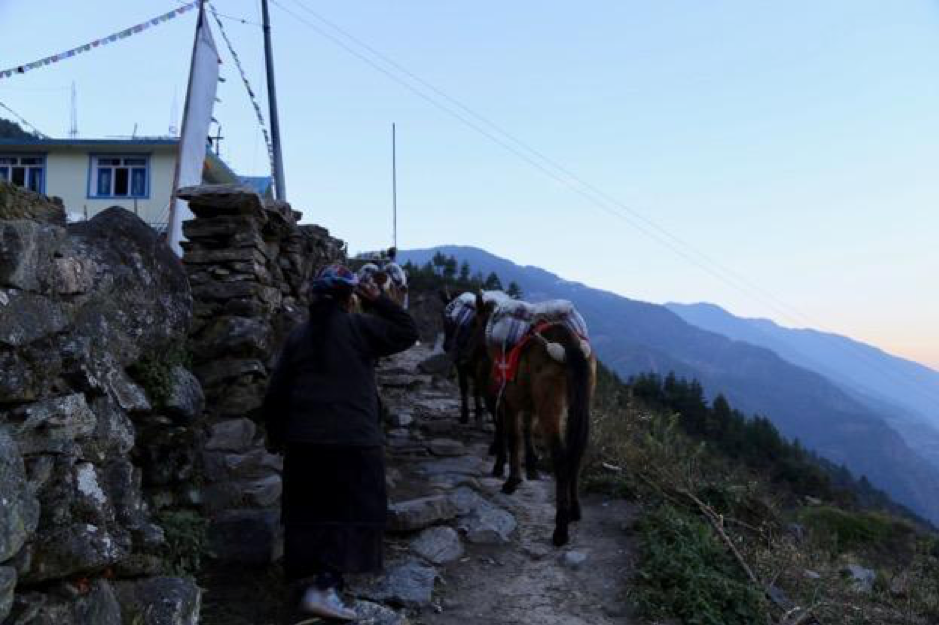
Langtang valley remains one of the only areas within Rasuwa district without road connectivity. Basic household provisions and consumer goods are still transported on mules and horses.
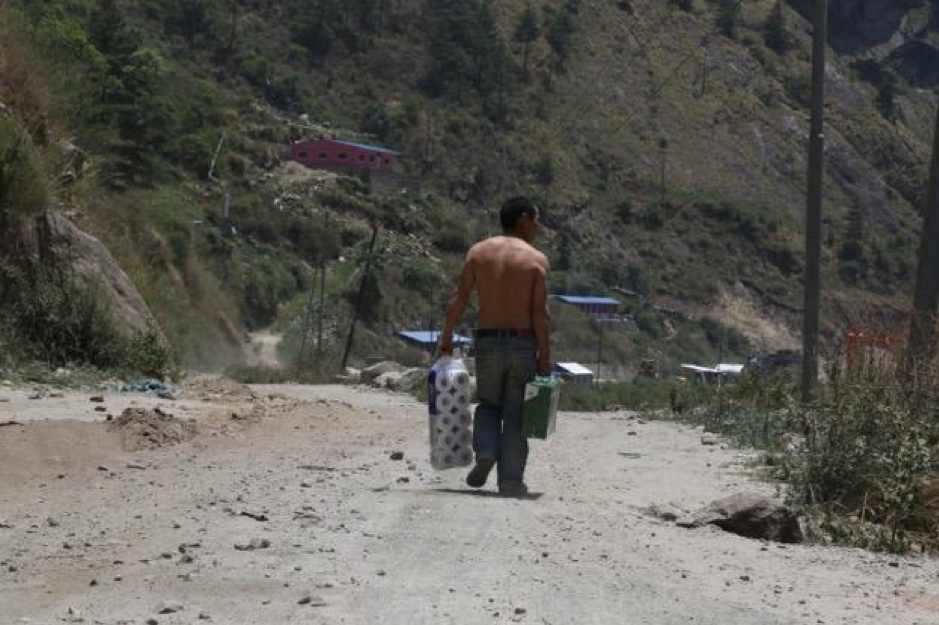
A large number of Chinese workers are employed at the hydro projects in Rasuwa, as they are considered more skilled than the Nepali workers who work alongside them. Unsurprisingly, residents say there is significant wage gap between Chinese and Nepali workers.
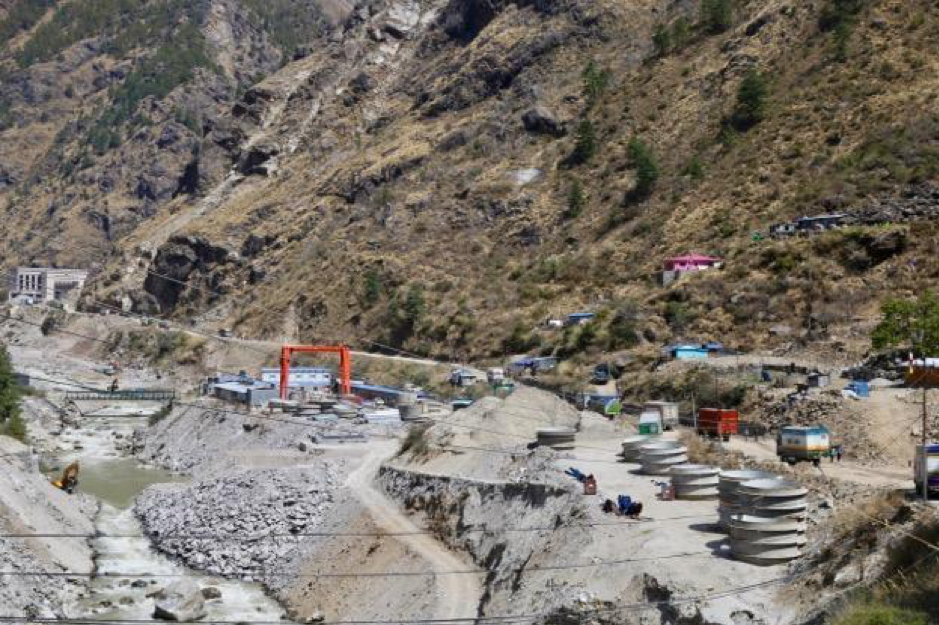
The headquarters of the Rasuwagadhi hydropower plant, the district’s northernmost hydro plant, is just about 400m downstream from the Rasuwagadhi border point, at the confluence of the Kyirong Khola and Lende Khola. This run-of-the-river project aims to generate 613 GWH of electricity annually. A Chinese company, China International Water and Electric Corporation is contracted to complete this project.
This article was originally published in Himalaya The Journal of the Association for Nepal and Himalayan Studies and has been republished under Creative Commons.
:::
We welcome your comments. Please write to us at letters@recordnepal.com or comment below.
Phurwa Dhondup Gurung Phurwa Dhondup Gurung studies Geography at the University of Colorado Boulder.


COVID19
News
3 min read
A daily summary of all Covid19 related developments that matter
COVID19
Features
3 min read
The coronavirus numbers have gone down only because testing has decreased, but the government would have you believe otherwise
Features
6 min read
A year ago Nepal first went into lockdown to prevent the spread of Covid-19. A year later, new cases are rising once again.
Explainers
5 min read
Nepal’s vegetable prices are largely determined by the middlemen traders rather than by the logic of actual supply and demand
Photo Essays
10 min read
Commodities, trade, and transportation in Northwest Nepal
Photo Essays
9 min read
A visual glimpse into how infrastructure development and trade are changing the area’s geopolitical and geoeconomic significance.
COVID19
Features
6 min read
Even though the government has mandated private health institutions to open their services to Covid-19 patients, many are denying them treatment
Week in Politics
6 min read
The week in politics: what happened, what does it mean, why does it matter?